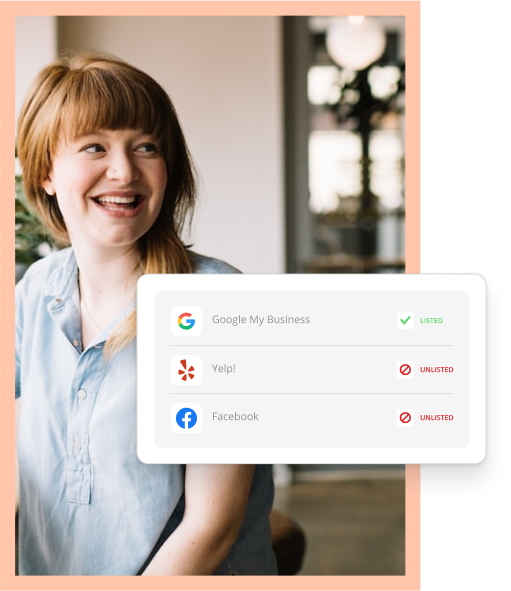People often use the terms customer service and customer experience interchangeably. The truth is, there are key differences between these two aspects of any business.
When I was little, my mind was blown by the following concept: All squares are rectangles, but not all rectangles are squares. Believe it or not, customer service and experience can be thought of similarly.

Text Templates to
Ask for Referrals
Asking customers for a referral is a great way to get new business. In this free resource, you’ll get six templates you can copy and paste to ask your customers for referrals, along with helpful tips.
Customer service is a piece of the customer experience. However, the customer experience as a whole cannot only be defined by specific instances of customer service.
First, let’s examine what these two functions really are, individually. Then we’ll discuss the difference between customer service and customer experience, and lastly, how in combination, they are a recipe for small business success.
Defining Customer Service (CS)
To put it in general terms, customer service is the support you provide your clientele during a single interaction. These situations typically arise, at the request of the buyer, before or after a purchase is made.
The goal of these touchpoints is to address questions or concerns, in addition to improving customer satisfaction with your business.
Examples of customer service include:
- Prior to booking an appointment, an esthetician may discuss which facial option would best suit the client’s skin type.
- Following a service, a home cleaning professional may apologize and offer a discount for services that didn’t meet the client’s expectations.
- A FAQ page on a lawyer’s website may outline which types of cases they specialize in and address other common concerns.
Not all instances focus on smoothing over a negative interaction but, it is worth noting that 90% of customers say that resolution is their most important customer service issue. Because of this, it’s important that your business be ready to fix issues swiftly and seamlessly.
Defining Customer Experience (CX)
As defined in our Customer Experience 101 blog post, the customer experience is how your clients perceive your business as a whole based on every interaction from start to finish.
Unlike customer service, the customer experience focuses on each and every point of contact your customer has with your business. From the very first time they stumbled across your Google My Business listing to their 30th service booked, and everything in between.
It is the entirety of the customer journey and it is critical to your business’s bottom line. In fact, there is an 80% increase in revenue when businesses focus on customer experience.
Identifying Key Distinctions Between Customer Service vs. Customer Experience
If these concepts are still sounding similar to you, that’s okay. Here are two key distinctions to make when considering each:
Think Micro vs. Macro
Customer service is a micro-interaction. Consider asking yourself, how does this singular experience make the customer feel: Happy, upset, indifferent?
Meanwhile, the customer experience combines all interactions with your business, customer service based and otherwise, to create a macro or big-picture view of your organization.
For example, in the video below, Haley shares her experience with a dog training company in Dallas, TX.
Notice how she doesn’t focus on one interaction. Rather, the story ties each touchpoint together from the company’s easy-to-navigate website to their superb training and their general love for what they do.
You can find more stories of exceptional customer experiences here.
Companies are going the extra mile with 76% of teams offering customer support outside of business hours.
Being Proactive vs. Reactive
In most cases, clients seek out customer service because they have a question or a problem. Good customer service is the ability to address questions or concerns and have the customer walk away feeling positive about the interaction and the business.
Alternatively, creating a positive customer experience means anticipating your patrons’ wants and needs, making it easy to do business with you, personalizing their experience while routinely collecting feedback to improve.
Building an exceptional experience goes beyond the customer. You need to focus on employee wellness, too. Why? Well, your team has a massive impact on how your customers view your business. Nearly 80% of people surveyed say customer satisfaction and customer loyalty depend on the employees they interact with.
Putting the Pieces Together
Customer service and customer experience is not an either-or type of thing. As a small, service-based business, you need to focus on both ends of the spectrum. Especially, seeing as both are vital to the long-term success of your company.
For instance, in a survey by Qualtrics XM Institute, they found that nearly 80% of customers will forgive a bad experience if they considered the service team as “very good.”
Having a proactive strategy in place to provide people the best experience possible is a winning solution. Actively engaging with your customers and preparing for bumps in the road puts you on the fast track to building trust and long-lasting customer relationships.

Text Templates to
Ask for Referrals
Asking customers for a referral is a great way to get new business. In this free resource, you’ll get six templates you can copy and paste to ask your customers for referrals, along with helpful tips.





